Fujifilm X-E4 review
Our Verdict
The Fujifilm X-E4 packs a lot of features and first-class epitome quality into a extremely outboard body that's perfect for street photographers, travelers and anyone who likes to carry a television camera with them on a regular basis.
For
- Fantabulous image quality
- Compact size
- USB charging
Against
- No in-dead body ikon stabilization
- Nominal external controls
Tomcat's Guide Verdict
The Fujifilm X-E4 packs a lot of features and excellent mental image tone into a highly movable body that's perfect for street photographers, travelers and anyone who likes to acquit a camera with them regularly.
Pros
- + Excellent image timber
- + Compact size up
- + USB charging
Cons
- - No in-body image stabilization
- - Minimal external controls
Fujifilm X-E4 review: Specs
Image sensor: 26MP APS-C X-Trans CMOS
Storage media: SD/SDHC/SDXC UHS-1
Image stabilization: via Office of Intelligence Support lenses
Display: 3.0-inch touch sensitive LCD
ISO: 160-12,800 (elastic to 80/51,200)
Max video resolution: DCI -E4K 4096 x 2160 @30/24 fps
Shot speed: 8fps (20fps with electronic shutter; 30fps with 1.25x crop)
Receiving set/Bluetooth: Yes
Ports: USB Type-C, HDMI micro connector (Eccentric D), 3.5mm stereoscopic picture mini adapter/connector (for mic and remote release)
Shelling life: (approx.) 460 frames
Size (consistence): 4.77 x 2.87 x 1.28 inches
Weight: 12.84 ounces (with battery and SD card)
The Fujifilm X-E4 is the modish — and smallest — addition to Fuji's touristy X-serial publication of mirrorless cameras. As an update to the Fujifilm X-E3, this model features a newer 26-megapixel sensor and processor, a flip-up LCD and a few design/hold in changes.
Its feature set volition ingathering most to experienced photographers and those World Health Organization want to improve their picture-fetching skills, because while you can put away up the television camera to be tip-and-shoot oblong, that's not the X-E4's strong suit. Kinda, you'll get down the best experience by exploring its more advanced functionality.
This rangefinder-style camera will strike a cord with street photographers, just thanks to its pack together size, the X-E4 is also bang-up for travel and quotidian photography. Mount Fuji also offers a well-rounded line of X-mount lenses to choose from, including the new (and tiny) XF 27mm f/2.8 R WR — which is available in a bundle with the camera and which is the lens I used for testing.
- Best photo editing software
- Spare your images in the taint with the best photo storage and sharing sites
Read on for our full Fujifilm X-E4 review and find what I liked and didn't like about it.
Fujifilm X-E4 review: Price and availability
The Fujifilm X-E4 in body-only guise retails for $849. ADD the XF 27mm f/2.8 R WR lens for a bundled rate of $1,049. Both the camera and the lens system are available directly.
Fujifilm X-E4 review: Design

Weighing a mere 0.80 pounds and measuring 4.77 x 2.87 x 1.28 inches, the Fujifilm X-E4 is the smallest model in Fuji's X-serial publication run along. Available in all black or black and silver, the X-E4's minimalist design has a ex post facto look and feel, reminiscent of 35mm film cameras. To achieve this aerodynamic body, the new model loses the modest grip and thumb indentation of its X-E3 predecessor, ensuant in a apartment, boxy torso.
Fuji offers an nonmandatory bobby pin ($90) that attaches to the tripod socket and an accessory thumb rest ($70) that connects via the camera's hotshoe, merely I seldom launch myself want that I had either accessory. The camera body is textured and I was generally able to maintain a solid handhold happening the X-E4. However, photographers with larger hands whitethorn want to choose for both accessories. And, presented the camera's compact size of it and some tiny control buttons, they Crataegus laevigata deficiency to adjudicate the X-E4 connected for size up before buying.
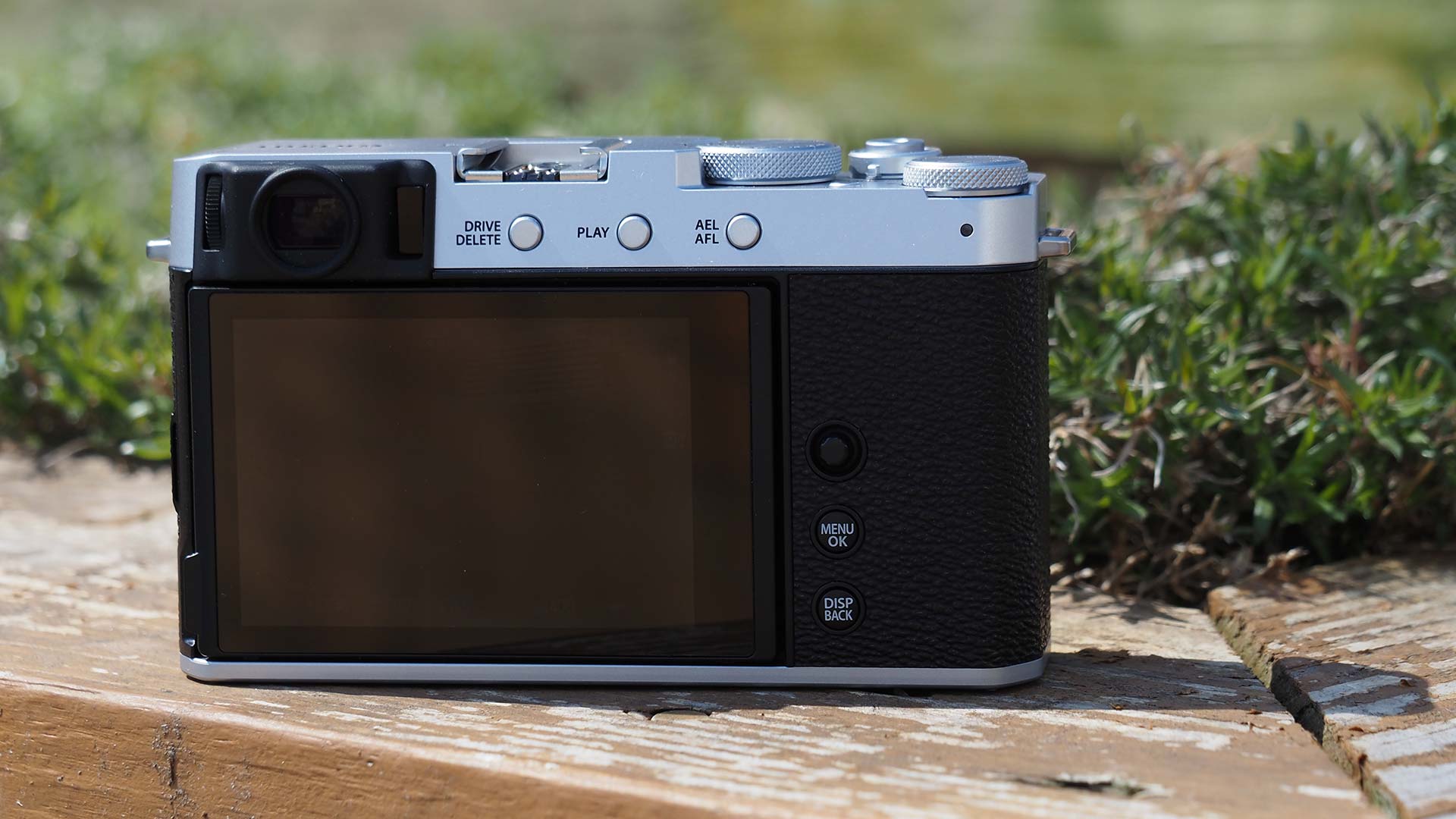
Adding to its rangefinder design aesthetic, the X-E4's natural philosophy viewfinder is positioned along the left upper corner of the television camera. Left-eye dominant photographers may bump the position a little uncomfortable with their nose pressed against the LCD, simply the EVF is bright and clear regardless of your controlling eye.
The 3-inch touchscreen LCD provides 100% coverage and tilts up to 180-degrees for selfies and vlogging. There's a small check unofficially of the monitor to lift it from its flat position; from there, it's easy to adapt the blind for low-angle, overhead shot and selfies/vlogging.
The touch screen is responsive whether you're tapping to select a focus point, swiping through images in playback mode surgery accessing one of different custom jot options. Although the Q (quick) menu settings are touch sensitive, you need to use the joystick OR front command dial to navigate the standard menu.
There's no assembled-in flash so you'll call for to buy up a standalone unit to fit the hotshoe if you need an extra kick in of light. A single SD card slot shares the battery compartment on the bottom of the camera. Ports admit USB Typecast-C and HDMI micro connector (Type D), plus the camera comes with a 3.5mm stereo mini adapter so you can connect a mike or remote release.
Although the 27mm kit electron lens is windward immune, the camera itself is not — so be certain in inclement weather or when functioning in harsh conditions.
Fujifilm X-E4 review: Controls
The Fujifilm X-E4's see to it layout May be a little different to what you're used to. All the functionality is thither, just non necessarily where you require it to be, especially since Fuji has further minimized the X-E4's external controls compared to its X-E3 predecessor. For deterrent example, the new model loses the rear control dial, the look at mode button and the focus mode dial on the front panel, among new changes.
Along the top panel you'll discover a large shutter speed/mode dial that now features a P (Program Auto Exposure) mode option. IT's here that you select the exposure mode and/or set the shutter amphetamine. Unfortunately, the dial doesn't turn 360-degrees and as an alternative comes to a stop at the B (Electric light) setting along one end and the P setting at the different end of the revolution, sol you waste a bit time dynamical settings.
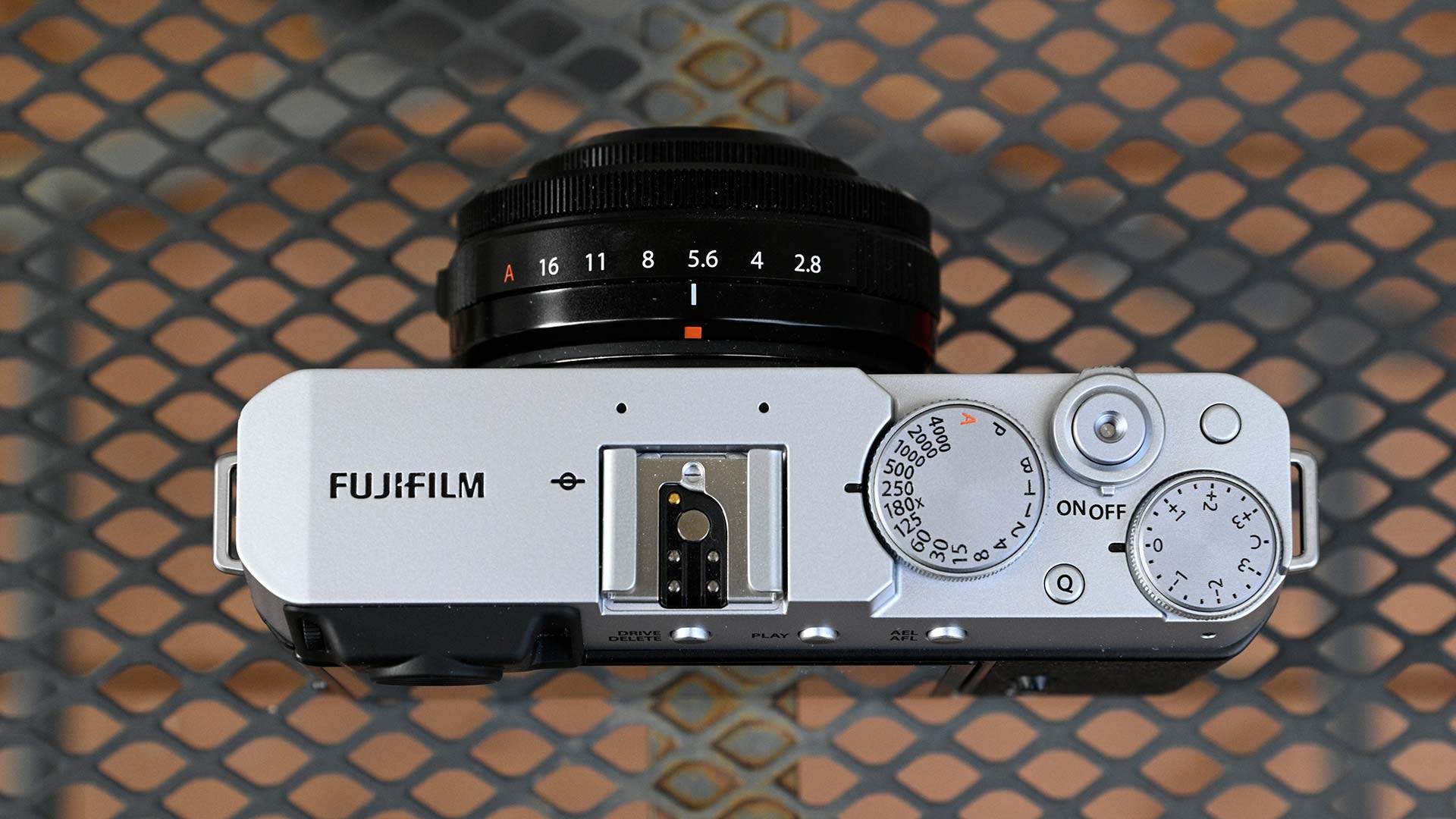
Some X-series lenses, like the 27mm model we used for testing, sport an aperture ring, which is used to manual adjust f/stops. While I opt this method, it may take a soft clock time to get used to it. If the lens doesn't have an aperture ring, you can specify the command dial — which is in perfect position for your forefinger — to control aperture.
The on/off switch surrounds the small shutter button to the straight of the shutter speed dial. A nice retro touch is the ability to utilization a non-automatic cable release to set off the shutter; although a remote option is also available, a manual cable length release costs less and is simpler to set up.
A separate EV (pic compensation) dial sits between the diminutive Fn (Social function) and Q (Quick Menu) buttons.
The back of the television camera features a trio of small buttons to the right of the EVF. The Drive/Delete clitoris provides a interminable number of options, including whether you want to shoot stills or movies, burst modes and bracketing settings to name a few. There are likewise playback and AEL/AFL buttons along the top hinder panel.
To the right of the LCD, you'll find a joystick for place setting sharpen points, a menu push button and a exhibit/back button.
Be trusty to explore all the customization options such as populating the Q (Flying) menu with your most-frequently used settings. The X-E4 bottom too Be customized so you lav "flick" your finger up/down/opportune/left on the touchscreen to call option up various functions such as histogram, electronic point and a host of other settings. (Angle: This option isn't easy to find in the manual until you seek on the tidings "flick.") If you compose with the LCD versus the EVF, this smaller flick trick may make up useful.
Fujifilm X-E4 review: Image quality
Given its similarities to its high end sib the Fujifilm X-T4, IT's no more storm that the X-E4 produces excellent image quality — some straight out of the camera (JPEGs) and in processed RAW files. With the option of using one of Fuji's hot picture show simulations (the X-E4 has a walloping 18 choices), users can well find a look that represents their cosmetic.
Provia is the default moving picture simulation and is a great alternative for well-nig scenarios. In fact, most of my test shots were captured in Provia and resulted in accurate colors that were pleasing to the eye without being o'er (operating room under) saturated, as you rump project in the photos below.



If you prefer a stronger intensity of coloring material, test the Velvia film simulation.

For black and white, I prefer the Acros film pretence (versus Monochrome). Although both bring forth similar results, Acros seems to offer more contrast. Inside the simulation, you give notice opt a subset filter for incompatible effects (Green River, Red, Yellow or Standard).

Test images were generally sharp and showed good detail. In that pic of lavender phlox, you can see tiny water droplets on some of the petals.

Overall, exposures were accurate and projectile range was quite good As well. The trees and branches in this dead reckoning retained contingent even out while the white clouds against the bright blue sky were right exposed.

The camera managed to maintain details at high ISOs, including this double shot at ISO 12800 (exposure was adjusted slightly in Adobe brick Camera Raw for better visibility).
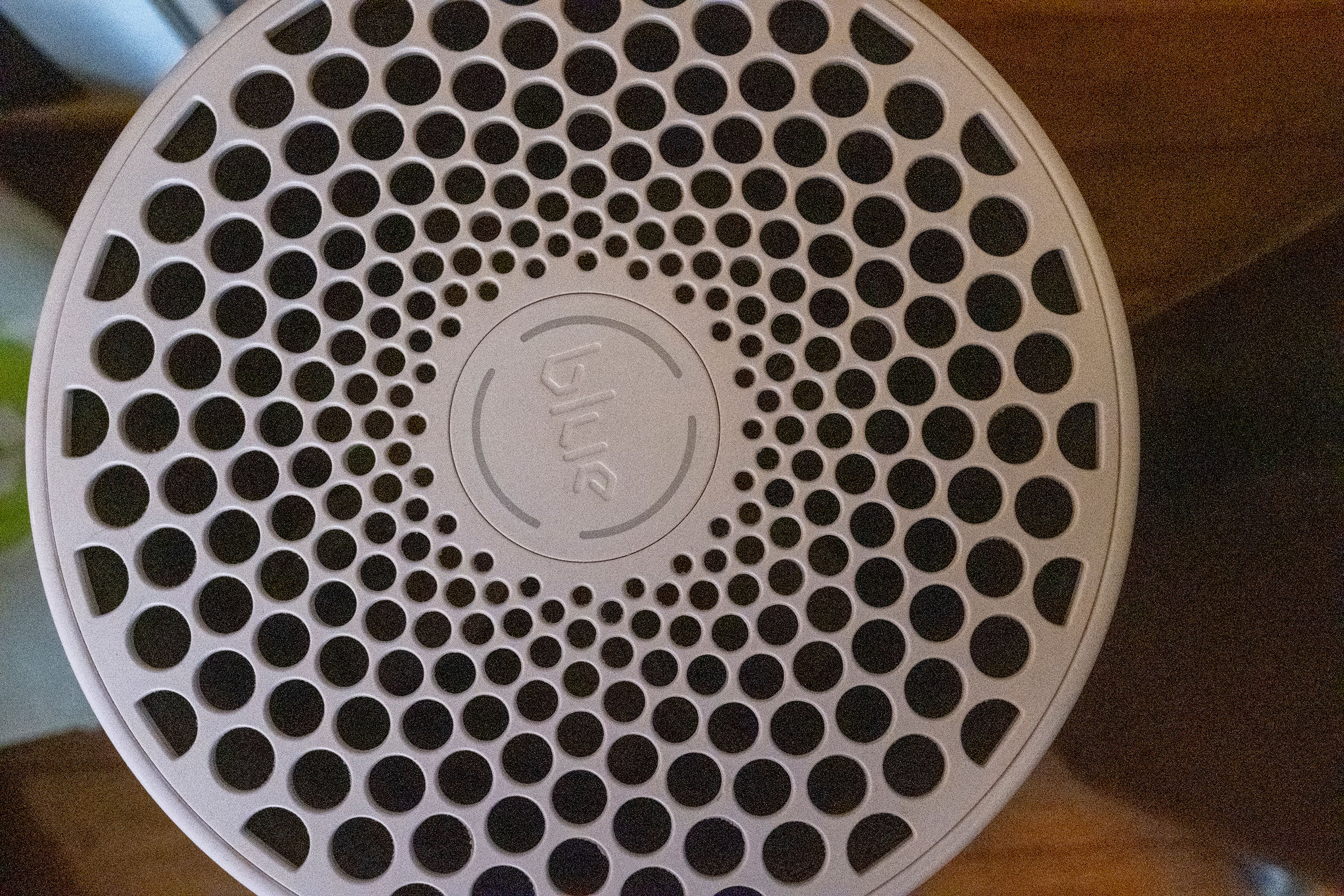
For a different perspective, the camera's Panorama have is easy to use and does a good occupation capturing a broad-brimmed scene.

Fujifilm X-E4 review: Video
As with its still image capabilities, the Fujifilm X-E4's video is quite saintly, especially for a camera in this class. In addition to 4K/30p video, which can be recorded internally or to an foreign device via HDMI, this little camera also excels at instinct HD video — including 240p slow motion.
Colors are high-fidelity and inside information are sharp. For a truly cinematic look, be sure to try the Eterna picture show simulation mode. I stuck with the standard Provia for video footage in my testing.
Unfortunately, without image stabilization and using a low-visibility 27mm lens, it was intractable to keep the camera steady when shot handheld. If I had a longer lens, I would have been able to cradle the lens in my mitt for a gnomish unscheduled stick out, but the pancake-style 27mm lens system provided very undersize surface to hold.
Unlike nearly cameras, there's no loss movie push. Instead, you have to press the Drive/Delete button, curlicue devour to choose Movie and so press the shutter clitoris. It's not a hand breaker merely IT is something to be aware of, since it takes an extra few seconds to switch between stills and video.
The good news is that the tv camera is equipped with Zebra stripe, F-Log (8-bit), microphone jack and headphone jack. The latter requires the supplied adapter, though.
Fujifilm X-E4 review: Performance
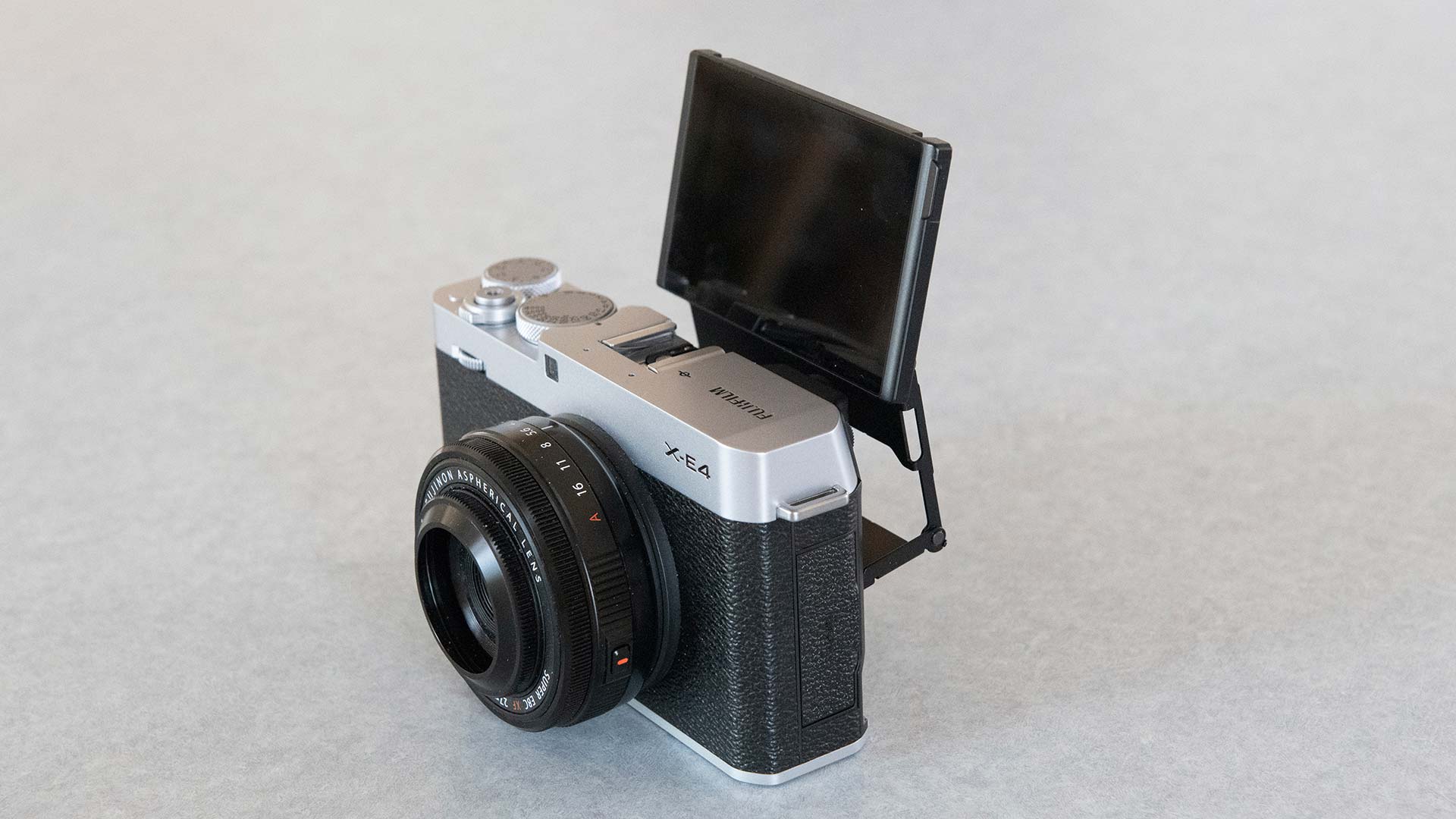
Largely, the Fujinoyama X-E4 delivers responsive operation. You can quickly choose a focus point in time with the little joystick or aside tapping on the LCD. Kickoff up is excitable and autofocus is (mostly) fast and accurate. Similarly, the camera well hones in on faces and eyes.
Continuous shot is speedy at up to 8 frames per second with the robotlike shutter. Switch to the electronic shutter for busy 20fps (30fps if you're okay with a 1.25x crop). Unfortunately, autofocus tracking of fast moving action isn't same of the X-E4's hefty suits, though, and it can't keep up with the spritely continuous shot speeds.
That same, the little X-E4's AF is majuscule for static subjects. Given its butt markets — street picture taking and go off, for example — the camera's AF is more than sufficient.
Battery life was better than supposed for much a small camera: up to 460 smooth images or about 60 transactions for 4K video (75 proceedings for full HD).
Fujifilm X-E4 brush up: Wi-Fi and Bluetooth
Fujiyama's free Camera Remote app is available for iOS and Android mobile devices and full treatmen with Wi-Fi and Bluetooth. Set-up is comparatively easy and the app generally whole kit and caboodle advantageously.
Viewing and transferring images is quite simple, too. Keep in mind that the app resizes images to 3 megapixels; if you want to channelize full-resolution images, you can change the background connected the camera computer menu.
The app also provides an option to shoot remotely, which is great for times when you want to snap away from an rum (and not easily accessible) angle. Remote shooting is also double-dyed for group shots — it's a zealous alternative to a mortal-timer, since you can see the theme live.
Fujifilm X-E4 review: Finding of fact
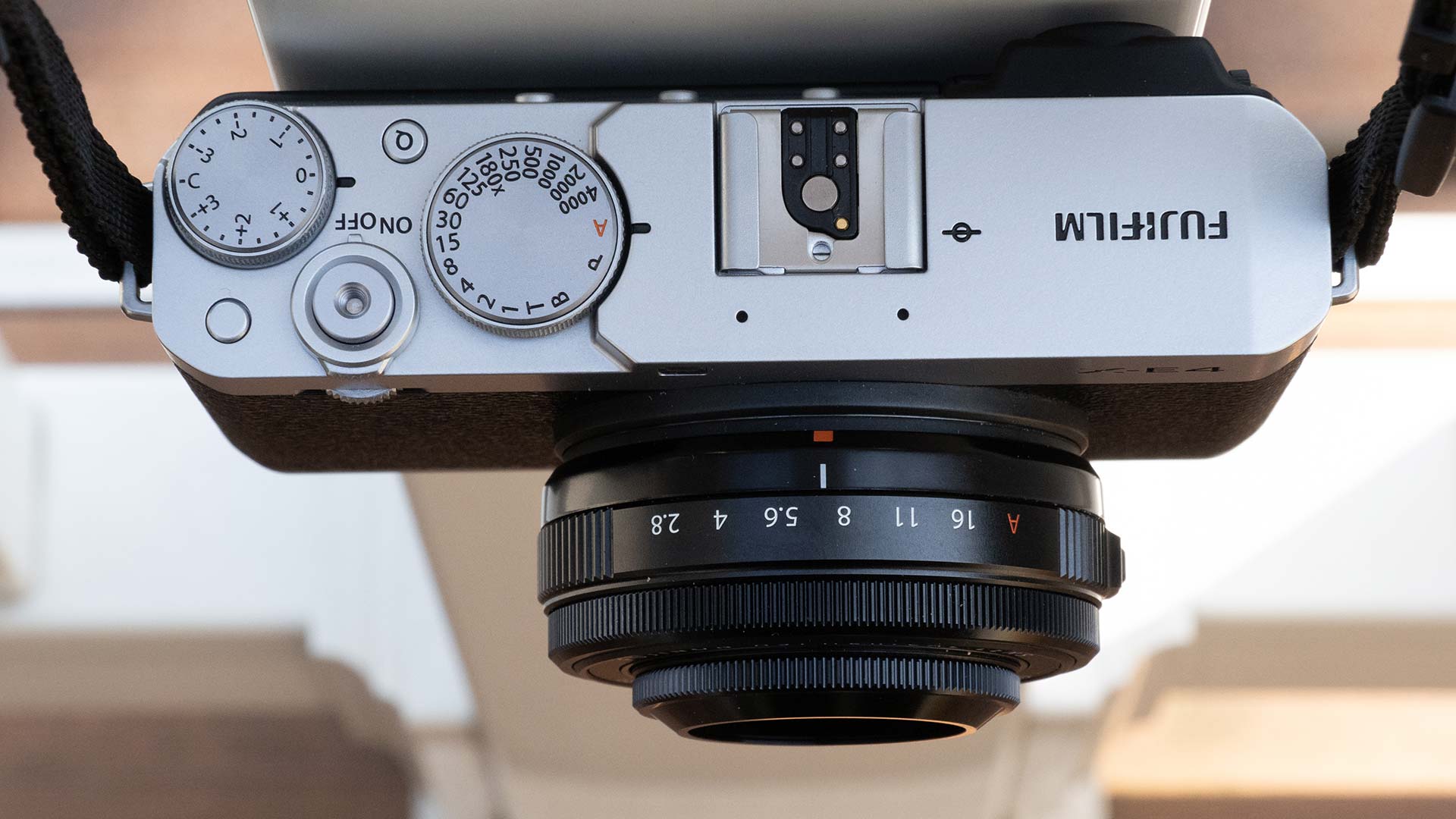
The Fuji X-E4 is a highly able companion for photographers World Health Organization wishing a solid feature set and excellent image caliber in a small body. Street photographers, travelers, quotidian shooters and vloggers will appreciate the camera's compact sized and many another attributes.
Given its minimalist invention and unusual shot have, some people may prefer a big camera body with a more traditional design. The lack of in-dead body image stabilization may also be a deal breaker for those who lean to dash at slow shutter speeds and who have a penchant for shot video. If those attributes are important to you, believe the Fujifilm X-S10. At $999 (Amazon), it's only about $150 much the X-E4.
Other competitors include the Sony a6100 ($750), with its excellent autofocus. You may also want to check proscribed the relatively small Nikon Z50 ($855).
But the Fujifilm X-E4 offers a lot of excellence for the price and size of it. If Fuji's X-serial controls are new to you, that's not a good reason to shy inaccurate from this camera — in fact, you may actually enjoy its unequalled shot experience.
- More: These are the outflank cameras right now
Fujifilm X-E4 review
Source: https://www.tomsguide.com/reviews/fujifilm-x-e4
Posting Komentar untuk "Fujifilm X-E4 review"